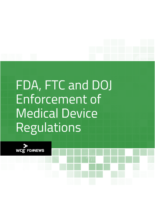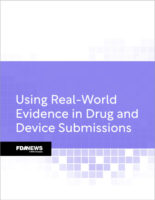
Home » Good Documentation: More Than Entering Data
Good Documentation: More Than Entering Data
“If it isn’t written down it didn’t happen” is told to everyone working in the pharmaceutical industry—from Day One. But writing things down is the easy part—what is more difficult is explaining:
- What must be written down?
- How should it be written down?
- What are common problems to avoid?
- What if I make a mistake?
Let’s take a look at those four issues.
- What must be written down?
Basically, documentation requirements apply to any information used in the manufacturing, testing, packaging, holding, and distribution of pharmaceutical products or medical devices. This includes, but is not limited to:
- Batch Records or Batch Manufacturing Records: The specific steps in manufacturing a product or device.
- Distribution Records: Information related to the transportation and storage of a drug product.
- Equipment and Use Logbooks: Historical maintenance or non-product specific activities related to a room or specific piece of equipment.
- Forms: Activity or process steps that are not captured elsewhere.
- Housekeeping Logs: Records related to keeping order within the facility.
- Investigative Reports: Information used to identify and correct atypical results and outcomes.
- Laboratory Test Data/Laboratory Notebooks: Records related to product discovery or development; in process and final test results.
- Training History: Records that capture training events and serves as proof of an individual’s competence to perform a task.
- How should it be written down?
Good Documentation Practices are guided by five standards. These standards consist of truth, accuracy, completeness, legibility, and timeliness.
- Truth: This standard maintains that the person who completed the process or performed the task actually did the work—and completed the appropriate documentation. No signature stamps are to be used and no one other than person who actually did the work signs the document.
- Accuracy: Accuracy means that the data is free from errors and omissions. Results are not to be guessed at, taken as an average from past calculations or omitted.
- Completeness: All data generated from the manufacturing, testing and distribution processes must be included in the document.
- Legibility: Legibility means that the data can be read and understood by someone other than the person who wrote it. The information must be easily recognizable—one shouldn’t have to try and guess what the person was writing.
- Timeliness: All entries must be written on the document at the time that the process or activity happened. Further, all entries must be written down in the order that they occurred.
- What are common problems to avoid?
- Fraudulent data or suspicion of fraud: Fraudulent data entry most often occurs when data are “guessed” at or falsely entered into a record because they fall within normal parameters of the process.
- Performer signing also signing as Verifier: Fraudulence also happens when a performer signs as a verifier—or puts in someone else’s signature as a verifier.
- Data not obtained directly from automated systems--such as from Delta V or LIM systems: Printouts of original data generated by any automated system should be attached directly to the appropriate document.
- Data not recorded on a timely basis: Documents must be completed as the information is obtained. To do otherwise is falsification of the document. If circumstances prevent immediate documentation, you may need to ask someone to perform the documentation for you. If this happens then both individuals who were involved in the documentation must sign or initial the document. Back dating of records should not be tolerated.
- Changes not dated or explained properly: Any changes to the document must be initialed, dated and explained according to your organization’s requirements.
- Inaccurate data: Inaccurate data may result from such things as missing or incomplete information; inaccurately reading times, temperatures, scales or gauges or other types of errors. These types of errors include:
- Date Error (DE)
- Spelling Error (SP)
- Calculation Error (CE)
- Entry Error--Including transcription and transposition errors (EE)
- Late Entry (LE)
- Significant Figure Error (SF)
- Rounding Error (RE)
- Obscured original data: When original data are not legible, the process cannot be verified or replicated. There is no way of knowing if the data are accurate or if the step in the process or production was done in order.
- Use of ditto marks: Original data must always be entered on documents. Substituting ditto marks for original data entries is not allowed—even if the data being entered are exactly the same as the preceding data.
- Use of pencil: Use of pencil allows falsification of data. Pencil notations can be erased and changed. All documentation should be made with an indelible marker according to company standards. Changes to documents should be made according to company standards; changes should be initialed, dated and explained.
- Use of signature stamp: Signature stamps shouldn’t be in the workplace. Signature stamps allow people who did not perform or verify a process—to “sign” documents for a co-worker—in essence falsifying the data.
- What if I make a mistake?
When you make a mistake—and everyone will at some time—here’s how to handle it:
- Correct your mistake.
- Draw a single line through the mistake.
- Enter the correct information close to the mistake.
- Write your initials and date by the new information.
- Correct mistakes as quickly as possible.
- Do not black out, obscure or erase the mistake – the original data must be readable!
- Do not partially cross out mistakes; always draw a line though the mistake.
- Do not use correction fluid, erasers, or tape.
- Correct your mistake.
Good Documentation Practices are essential to ensuring product quality and patient safety. By following these guidelines, you should be able to write and maintain documents that will stand up to a regulatory agency audit.
Contact Information:
Dave Gallup
GMPTraining.com, Inc.
18585 Coastal Highway
Unit 10, #149
Rehoboth, DE 19971
215-870-5665
dagallup@gmptraining.com
www.gmptraining.com
More than Entering Data Checklist |
||
|
|
|
|
|
|
Is My Data--- |
Yes |
No |
|
|
|
True? |
______ |
______ |
Accurate? |
______ |
______ |
Complete |
______ |
______ |
Legible? |
______ |
______ |
Timely? |
______ |
______ |
|
|
|
Did I make sure that-- |
||
|
||
My data isn’t fraudulent ? |
______ |
______ |
The Performer didn’t also sign as Verifier? |
______ |
______ |
Any data obtained from automated systems is attached to my document? |
______ |
______ |
My data was recorded on a timely basis? |
______ |
______ |
Any changes were dated and explained properly? |
______ |
______ |
No data was recorded inaccurately? |
______ |
______ |
Any inaccurate data recorded was properly identified? |
______ |
______ |
|
______ |
______ |
|
______ |
______ |
|
______ |
______ |
|
______ |
______ |
|
______ |
______ |
|
______ |
______ |
|
______ |
______ |
No data was obscured? |
______ |
______ |
No ditto marks were used? |
______ |
______ |
No pencil was used? |
______ |
______ |
No signature stamp was used? |
______ |
______ |
|
|
|
Did I correct a mistake by-- |
||
|
||
Drawing a single line through the mistake? |
______ |
______ |
Entering the correct information close to the mistake? |
______ |
______ |
Writing my initials and date by the new information? |
______ |
______ |
Correcting it quickly? |
______ |
______ |
Leaving the original data readable? |
______ |
______ |
Not using correction fluid, erasers, or tape? |
______ |
______ |
Upcoming Events
-
23Apr
-
25Apr
-
07May
-
14May
-
30May
